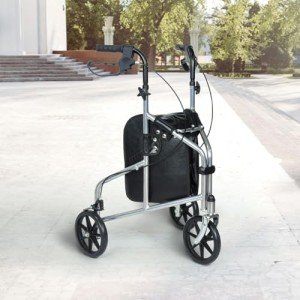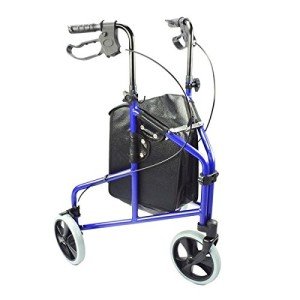20 Trailblazers Leading The Way In Handicap Walker
페이지 정보
본문
Understanding Handicap Walkers: Types, Benefits, and Usage
Handicap walkers, likewise typically referred to as mobility walkers or just walkers, serve as vital aids for people with mobility difficulties. These gadgets offer physical assistance and stability, making it possible for users to stroll more confidently and individually. This article explores the various types of handicap walkers, their benefits, and crucial factors to consider when picking one.

What is a Handicap Walker?
A handicap walker is a gadget designed to help individuals who have difficulty walking due to age, disease, or impairment. Walkers help users keep their balance, avoid falls, and recover mobility. Unlike canes, which provide minimal support, handicap walkers normally offer a wider base of stability, making them ideal for more substantial mobility obstacles.
Types of Handicap Walkers
Handicap walkers come in numerous designs, designed to fulfill the unique needs of users. Below is a breakdown of the most typical types:
| Type of Walker | Description | Suitable User |
|---|---|---|
| Requirement Walker | A Lightweight Four-Wheeled Rollator for Easy Mobility frame that needs raising to move. Normally has rubber suggestions for traction. | Those who can raise the walker and have moderate balance issues. |
| Wheeled Walker | Features 2 wheels at the front, enabling easier mobility without lifting. | Users who can keep stability and require more support while walking. |
| Pepe 4-Wheel Rollator Walker with Seat Walker | Similar to wheeled walkers but consists of hand brakes and a seat for resting. | Individuals requiring a portable resting choice with boosted mobility. |
| Bariatric Walker | Particularly created for heavier people, using reinforced frames and larger hand grips. | Much heavier users requiring additional support and stability. |
| Child Walker | Custom-made designs for children to Drive Devilbiss Tri-Walker Aid With Seat - Red in their advancement and mobility. | Kids with developmental hold-ups or mobility obstacles. |
Benefits of Using a Handicap Walker
Numerous users find that handicap walkers considerably improve their quality of life. Here are some benefits:
1. Increased Stability
Handicap walkers supply a sturdy support structure, which helps prevent falls and boosts users' confidence when moving around.
2. Enhanced Mobility
Walkers make it simpler for individuals with mobility restrictions to browse stairs, irregular surface areas, and other difficult environments.
3. Independence
Using a walker makes it possible for people to perform everyday activities separately, whether it's walking your house or going Ruby Aluminum Shopping Rollator - 36L Capacity Cart.
4. Discomfort Relief
Walkers improve posture and disperse weight more equally, potentially minimizing pain in joints and muscles during movement.
5. Social Engagement
By facilitating mobility, walkers permit users to get involved more actively in gatherings, family gatherings, and community activities, fostering a sense of belonging.
Essential Considerations When Choosing a Walker
Choosing the right handicap walker is crucial for guaranteeing safety and convenience. Below are essential factors to think about:
User's Height: Walkers been available in different heights. It's important to select one that enables the user to stand upright with a slight bend in the elbows when holding onto the handles.
Weight Capacity: Assess the weight capability of the walker, especially for bariatric choices, to guarantee it fits the user's requirements.
Portability: If the walker will be utilized often in different locations, think about models that can be quickly folded or transferred, such as rollators.
Functions: Some walkers consist of additional features like cushioned seats, storage baskets, and adjustable handles. Assess which functions are most helpful for the user.
User Preferences: The individual's convenience and preferences need to likewise play a significant role in the choice. Checking numerous models might assist determine the very best fit.
How to Use a Handicap Walker Effectively
Utilizing a handicap walker properly guarantees safety and maximizes its benefits. Follow these steps for safe use:
- Adjust the Height: Make sure the walker is gotten used to the correct height for the user.
- Support the Walker: Place the walker in front while ensuring all four rubber suggestions or wheels are in contact with the ground.
- Use Proper Techniques: Move the Senior Walker forward about one action length, and then step into the walker while keeping the weight well balanced.
- Maintain Good Posture: Stand straight and utilize the walker for assistance, not leaning excessively on it.
- Practice Regularly: Encourage users to practice walking with the Foldable Walker routinely, assisting to construct self-confidence and enhance balance.
Frequently Asked Questions (FAQs)
1. What is the distinction between a basic walker and a rollator?
Standard walkers require the user to raise them with each step, while rollators have wheels and allow the user to press them forward without lifting. Rollators also generally consist of brakes and might have a seat.
2. Are handicap walkers covered by insurance?
Protection for handicap walkers can vary based upon an individual's insurance coverage plan. It is recommended to contact the supplier for specific information concerning protection and any required documentation required.
3. Can kids use handicap walkers?
Yes, there are walkers developed particularly for kids that accommodate their developmental requirements. It's necessary to pick a model that is age-appropriate and provides the required support.
4. How do I preserve my walker?
Frequently check the walker for wear and tear, consisting of the grips and wheels. Clean the walker as needed and make sure all parts are operating correctly for safety.
5. When is it time to stop using a walker?
This varies by individual. Users must talk to their healthcare supplier to assess mobility enhancements and talk about whether transitioning to a different mobility aid or moving without support is appropriate.
A handicap walker can be a transformative tool for people with mobility obstacles, using them greater stability, self-reliance, and boosted quality of life. By understanding the different types, benefits, and key considerations in choosing a walker, people can make educated options that align with their distinct needs and way of life. Whether for rehab, aging gracefully, or managing impairments, handicap walkers play a crucial role in promoting mobility and wellness.


